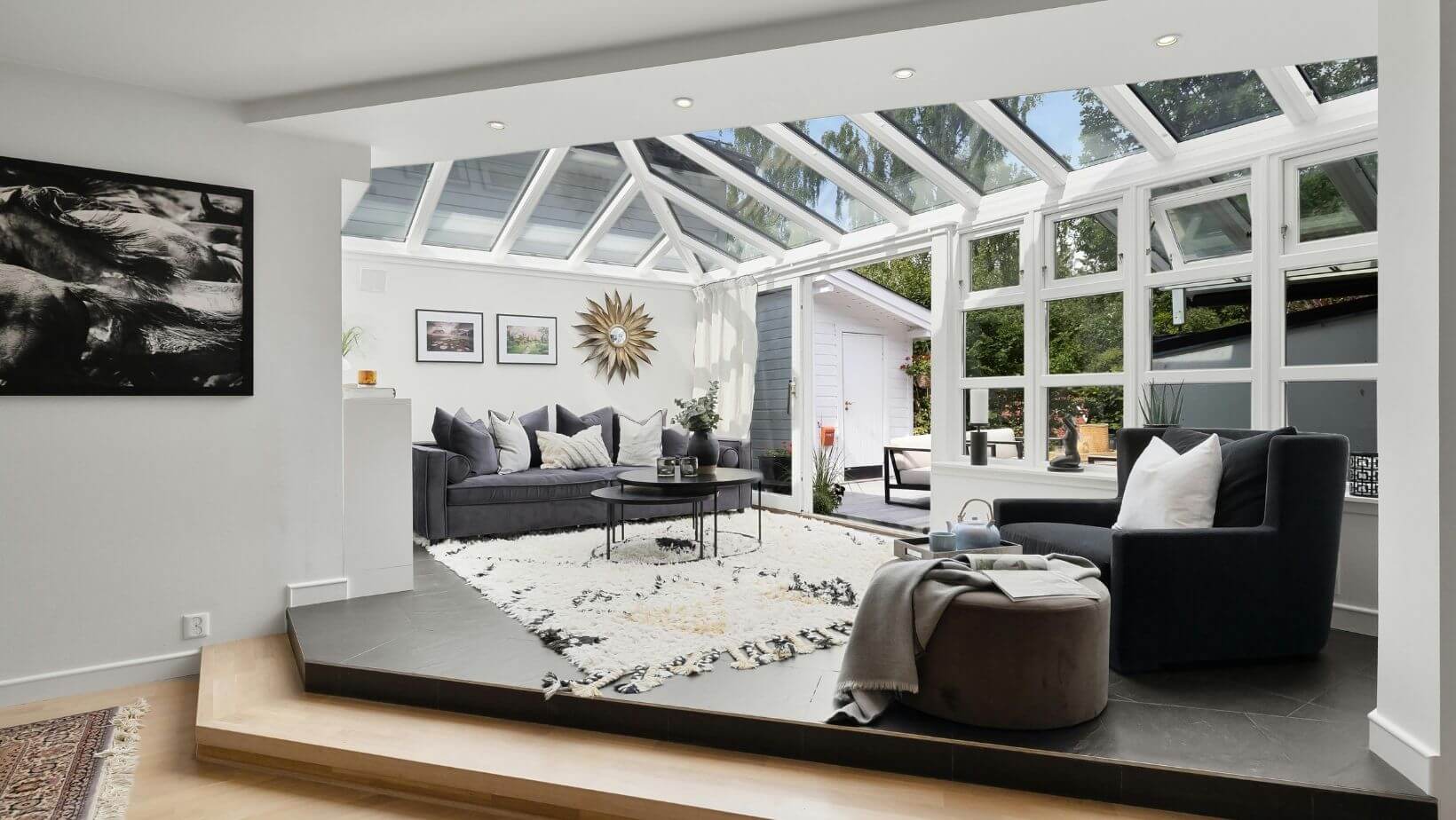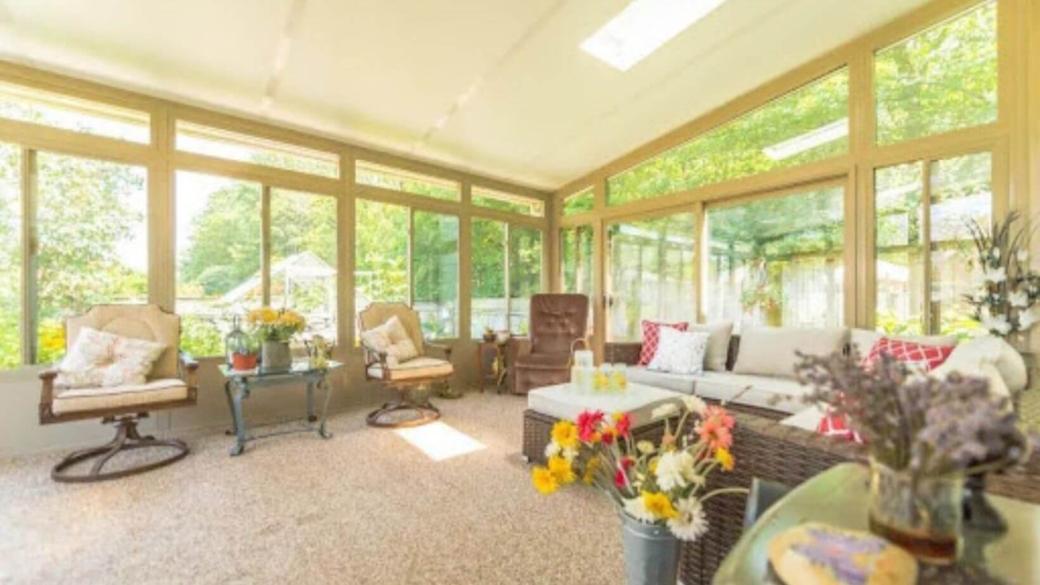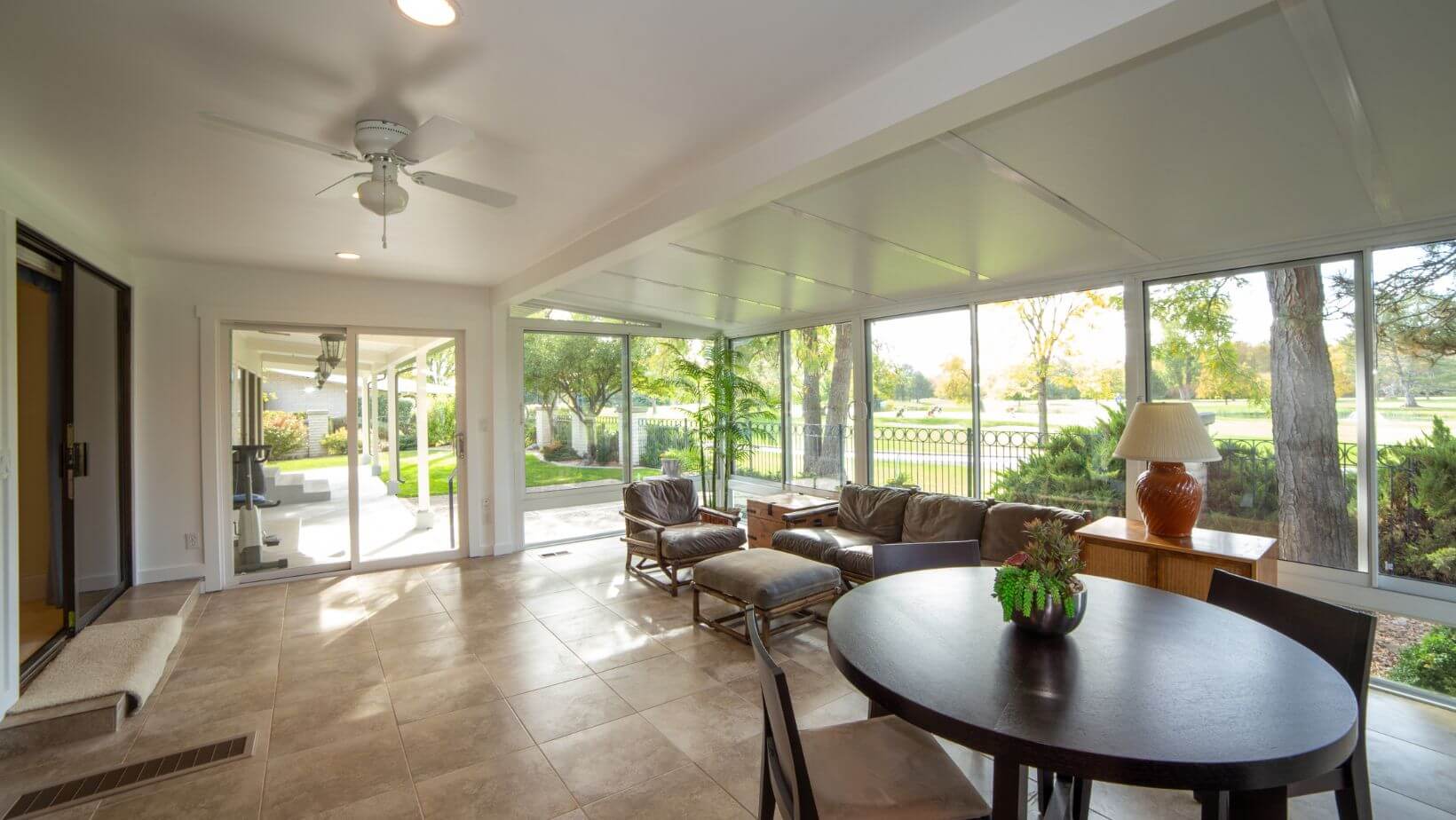A 3-season sunroom offers a perfect space to enjoy the outdoors while staying comfortable, even when the weather is less than ideal. Unlike a 4-season sunroom, which is designed for year-round use with added insulation and heating, a 3-season sunroom is intended for use during the spring, summer, and fall. However, it’s still important to consider your region’s specific climate when choosing the right 3-season sunroom for your home. This guide will help you understand key factors to consider when selecting a sunroom based on the climate in different parts of the USA.
1. Understanding the 3-Season Sunroom
A 3-season sunroom is an excellent addition to a home, offering a balance between indoor comfort and outdoor views. It is generally equipped with large windows and screens, allowing you to enjoy natural light and fresh air while being protected from bugs and the elements. However, since it is not fully insulated or designed for year-round use, a 3-season sunroom is ideal for moderate climates or areas with short, mild winters.
The key features of a 3-season sunroom are good ventilation, comfort, and functionality. It helps to create a seamless connection between your indoor and outdoor spaces, extending your living area without requiring the constant upkeep of a fully conditioned space.
2. Regional climate variations across the USA
The climate plays a crucial role in determining the best 3-season sunroom for your home. Here’s a breakdown of how different regional climates can affect your choice:
- Northeast (e.g., New York, Maine, Vermont): winters in this region are harsh, with heavy snow and freezing temperatures. Insulation is crucial here, and a 3-season sunroom should have high-quality insulation in its walls and roof. Triple-pane windows and a sloped roof design will help manage the snow load and prevent heat loss. Consider materials like vinyl or aluminum, which are durable in these cold conditions.
- Midwest (e.g., Michigan, Ohio, Wisconsin): the Midwest experiences cold winters with freezing temperatures and hot summers. You need a sunroom with energy-efficient materials that can handle both extremes. High-density foam core walls and double-glazed windows will help maintain comfort throughout the year. Make sure to choose weather-resistant materials that can withstand the region’s fluctuating temperatures.
- South (e.g., Florida, Texas, Louisiana): the South is known for hot, humid summers and mild winters. Here, ventilation is key to keeping the space cool in the warmer months. Acrylic or vinyl-glazed windows can help provide UV protection, preventing excessive sun exposure. Opt for shade options, like retractable awnings or window treatments, to keep the sunroom comfortable. Materials should be UV-resistant and durable enough to withstand the high heat and humidity.
- West (e.g., California, Washington, Colorado): the West has diverse climates, from coastal mildness to mountainous extremes. In coastal areas, where temperatures remain moderate, focus on UV protection and materials that resist saltwater corrosion. For mountainous regions, consider robust construction materials and energy-efficient glass to handle fluctuating temperatures. Customizable features like adjustable windows or retractable screens can help manage the sun and wind, ensuring long-term comfort.
3. Key features to consider
When choosing the right 3-season sunroom for your climate, the following features are essential:
- Insulation: In colder climates, insulation is essential to maintain warmth, especially at night. High R-value insulation in the walls and roof can prevent heat loss. In warmer climates, materials that prevent heat buildup, such as reflective roof coatings, are a good option.
- Materials: Choose durable materials like aluminum or vinyl, which offer great weather resistance. These materials are low-maintenance, making them ideal for harsh weather conditions.
- Windows and Glazing: For energy efficiency, opt for low-e glass or double-glazed windows. These help to regulate temperature, block UV rays, and minimize heat loss in winter while keeping your sunroom cool in the summer.
4. Additional considerations for long-term comfort
Ventilation is especially important in warmer climates to keep the space comfortable during hot summers. Ensure your sunroom has adequate airflow, whether through ceiling fans, windows, or retractable screens. Additionally, consider low-maintenance materials to reduce upkeep, ensuring your sunroom remains looking good and functional year after year.
5. Budgeting for your 3-season sunroom
The cost of installing a 3-season sunroom depends on several factors, such as size, materials, insulation needs, and roof design. Regions with harsher climates may require higher insulation and stronger materials, which can impact the price. However, investing in quality materials upfront will save you money on maintenance in the long run.
Sunspace Sunrooms: high-quality sunrooms across Canada and the United States
Sunspace Sunrooms is a leading company specializing in the design, manufacturing, and installation of high-quality sunrooms across Canada and the United States. 
Conclusion
Choosing the right 3-season sunroom involves considering both your local climate and your personal preferences. By selecting the appropriate materials, insulation, and features, you can ensure your sunroom is comfortable, functional, and durable throughout the year. Consulting with a professional sunroom installer will help you make the right decision based on your region’s specific climate conditions.


